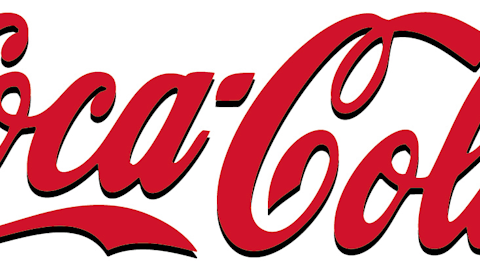Rock-bottom Treasury yields had many income investors turning to dividend-paying stocks over the past few years. But now Treasury yields have risen and the prices on many of those income stocks have been bid up, dropping their yields. To help find out how stocks stack up to Treasuries, I’ll run them both through a 10-year discounted cash flow model.
Representing fixed income: the 10-year Treasury note, with current yield bumping up against 2.9%.
In the stock corner: five consumer staples companies. Odds are you’d find products from several of these companies in almost any home in the U.S. and, increasingly, homes around the world.
Every cook knows McCormick & Company, Incorporated (NYSE:MKC) spices, but what they may not know is that McCormick & Company, Incorporated (NYSE:MKC) gets nearly half its revenue from industrial sales. The company has been increasing its dividend for 27 years running.

In addition to jams and jellies, The J.M. Smucker Company (NYSE:SJM)‘s brand lineup includes coffee, baking mixes and peanut butter. The company’s dividend has grown every year since 2002.
How could a consumer staples team not include The Procter & Gamble Company (NYSE:PG) ? Revenue is split roughly 40/60 between emerging and developed markets. P&G has been paying dividends for 123 years and increasing them for 57 years.
The final spot goes to The Coca-Cola Company (NYSE:KO). Looking for a global operation? The Coca-Cola Company (NYSE:KO) does business in more than 200 countries. The most recent dividend hike took the streak to 51 years. The Coca-Cola Company (NYSE:KO) shareholders are in good company; the largest shareholder is Berkshire Hathaway, with 9% of the outstanding shares.
The table below lists a few key statistics for the stocks.
| Company | Recent Stock Price | Forward Dividend Yield | Price/Earnings Ratio (TTM) | 5-year Dividend CAGR |
|---|---|---|---|---|
| McCormick | $70.67 | 1.92% | 23.16 | 9.10% |
| Clorox | $83.97 | 3.38% | 19.55 | 9.07% |
| Smucker | $109.06 | 2.13% | 21.81 | 12.63% |
| Procter & Gamble | $79.59 | 3.03% | 20.62 | 8.52% |
| Coca-Cola | $38.78 | 2.89% | 20.42 | 8.06% |
Source: Yahoo! Finance. TTM = trailing 12 months, CAGR = combined annual growth rate.
The match-up
The Treasuries and company stocks were compared using the net present value of the investment, coupon or dividend payments, and value at the end of 10 years. Since my crystal ball is a bit cloudy, the following assumptions were used to estimate the unknowns.
Treasury yield is 2.9% and the notes return full face value at maturity.
Stocks start with their current dividend rate and raise the payment each year in the same quarter as the past several years. Dividend hikes are assumed to be 75% of the past five year’s compound annual growth rate or 8%, whichever is less.
Stock prices are assumed to be 10% higher at the end of 10 years; less than a 1% compound annual growth rate.
Future values are discounted at the most recent consumer price index rate reported by the Bureau of Labor Statistics, 2%.
The model was also run with no dividend growth to find out how much each stock would need to lose over the 10 years for the Treasuries to come out ahead.
Results
When I did a similar comparison about a year ago, the yield on the 10-year was below inflation, so the Treasuries lost purchasing power. The results are much closer now that rates have come up, but stocks still hold an edge in this model. That edge comes at the cost of taking on equity risk versus the known cash flow of a treasury note.
| Investment | Change in Purchasing Power | Stock Gain (Loss) Needed to Equal Treasuries With No Dividend Growth |
|---|---|---|
| 10-year Treasury | 8.08% | N/A |
| McCormick | 14.87% | 10% |
| Clorox | 31.38% | (6%) |
| Smucker | 16.11% | 8% |
| Procter & Gamble | 27.67% | (2%) |
| Coca-Cola | 28.80% | (2%) |
Source: Author’s calculation.
Summary
These aren’t expected returns for the stocks; the scenario crimps dividend growth and assumes minimal growth in the stock price. The exercise is intended to compare several income streams and get a handle on the risks. The model also allows for “what-if” scenarios, so results can be compared with different assumptions.
It’s worth noting that these five stocks all trade at a premium to the S&P 500’s P/E ratio of 18.9. In short, the stocks look like a better bargain than 10-year T-notes for investors with a long time horizon, but neither these stocks nor the notes are screaming buys at these levels.
The article Income Match-Up: Consumer Staples vs. Treasuries originally appeared on Fool.com and is written by Russ Krull.
Fool contributor Russ Krull owns shares of McCormick. The Motley Fool recommends Berkshire Hathaway, Coca-Cola, and Procter & Gamble. The Motley Fool owns shares of Berkshire Hathaway.
Copyright © 1995 – 2013 The Motley Fool, LLC. All rights reserved. The Motley Fool has a disclosure policy.





